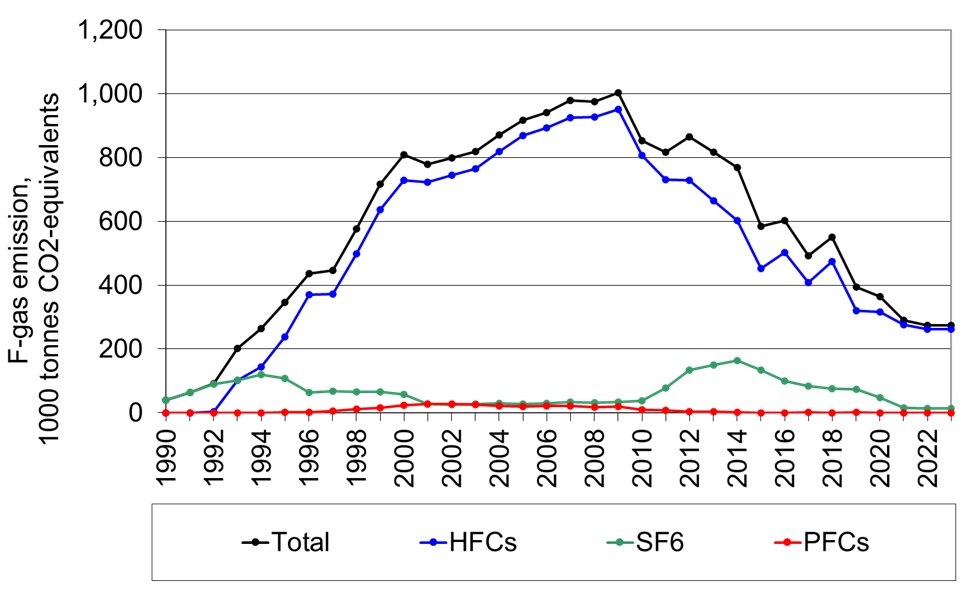This part of the Danish inventory only comprises a full data set for all substances from 1995. From 1995 to 2000, there has been a continuous and substantial increase in the contribution from the range of F-gases as a whole, calculated as the sum of emissions in CO2 equivalents. This increase is simultaneous with the increase in the emission of HFCs. For the time series 2000-2009, the increase is lower than for the years 1995 to 2000 and after 2009 the emission has been decreasing. The overall increase from 1995 to 2017 for the total F-gas emission is 32.9 %, while emissions decreased from 2009 to 2017 by 53.5 % mainly due to decreasing emissions of HFCs. SF6 contributed considerably to the F-gas sum in earlier years, with 28.7 % in 1995. Environmental awareness and regulation of this gas under Danish law has reduced its use in industry. A further result is that the contribution of SF6 to F-gases in 2017 was only 15.7 %. The use of HFCs has increased several folds. HFCs have, therefore, become even more dominant, comprising 71.1 % in 1995, but 84.1 % in 2017. HFCs are mainly used as a refrigerant. Danish legislation regulates the use of F-gases, e.g. since January 1, 2007, new HFC-based refrigerant stationary systems are forbidden. Refill of old systems is still allowed. The use of air conditioning in mobile systems and the amount of HFC for this purpose increases.

(For background data click here)
Links to detailed background data for greenhouse gas emissions can be found under "Supporting documentation".